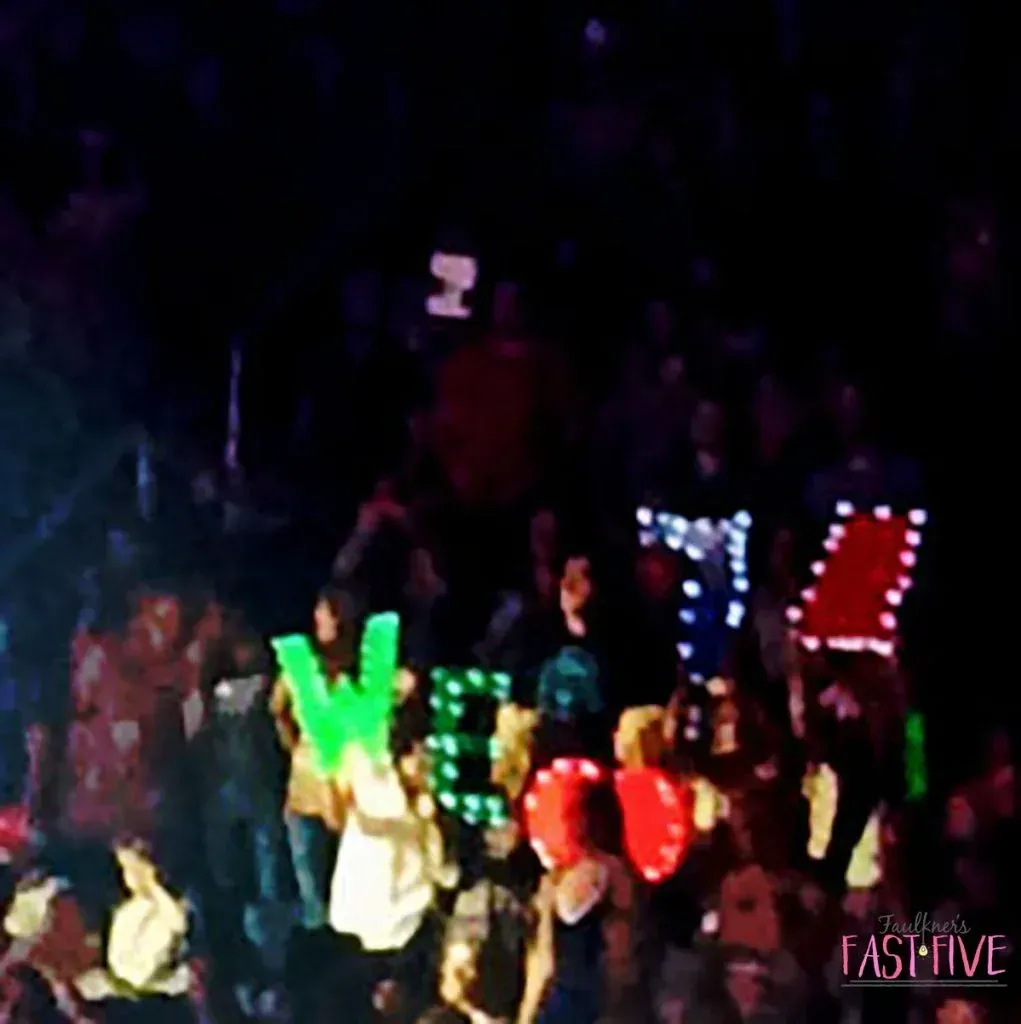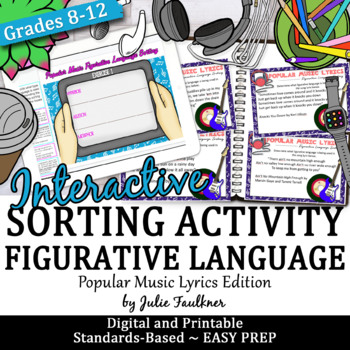What I Learned About Teaching
from a Country Music Concert
Being from Tennessee, I grew up visiting Dollywood theme park and listening to southern gospel music and pretty much anything with a country twang. So when I had the chance to see Dolly in concert just a short drive my own Tennessee mountain home, I seized the opportunity. About that same time frame, another favorite – Jason Aldean – was playing nearby, so I snagged a ticket to his concert as well. I guess you know you are a teacher, though, when… you can’t even go to a concert without having your classroom on the brain. Well, that’s me; so, here are five teaching strategies I learned from a couple of country music concerts. These are what I would consider the "basics" of building a star-studded classroom environment built for success!
1. COME OUT ON FIRE AND ROCK IT FROM OPENING TO CLOSING
Both Dolly Parton and Jason Aldean literally came out to the stage on fire. Dolly graced the stage singing her version of “Girl on Fire,” while Jason Aldean emerged from behind of a flaming letter A. The excitement and anticipation of the moment was thrilling, and I was amazed by the attention to detail that the display demonstrated. And, for over two hours both country crooners belted out their melodies and danced non-stop.
What does this have anything to do with teaching tips, ideas & strategies? At the concerts, I was captivated by the creativity and excitement of the opening sets, and I believe students like a little flair, too. Even if it’s just a quick video clip, song, or a related image to set the tone, it will amp up the mood of the lesson and create enthusiasm. Here’s a quick video with a few more hook/starter ideas over on my Instagram page.
It wasn’t just the openings, either, that were so fantastic. Both concerts closed on a positive, personal note. Students need to leave our class feeling the same way; whether it has gone well or as planned or not, finding a way to close on a positive note could make or break the feeling students have when it’s time to return to class tomorrow. Maybe it won’t be fire and lights, but students do appreciate and notice the teachers who show they care.
2. CONNECT WITH THE AUDIENCE
Despite the flashy, bright lights, smoke, and the distance from the stage to the seats — all things that would have been really easy for the stars to hide behind — Dolly and Jason both made every attempt to recognize the audience. Dolly even went as far as to tell us several times that she could see us and how much she loved to see that her fans were standing and singing along with her. Jason Aldean often paused to wave at the cheap seats, and once when he spotted a less-than-enthusiastic attendee who apparently had his arms crossed, JA encouraged him to clap along! Of course, everyone knew the words to the songs, and several times throughout the concert, the performers would turn the microphone outward and let the crowd take the lead. They didn’t let that fourth wall stop them, and teachers shouldn’t either.
Students have told me that the teachers who talk to them – not just at them – are the ones whose classes they enjoy the most. Students need to feel a connection. I am reminded of a Toni Morrison quote: “When a child walks in the room, your child or anybody else’s child, do your eyes light up? That’s what they’re looking for.” Proximity isn’t just for discipline, and conversation isn’t just for content.
Further, it’s so easy to get so involved in preparing my lessons to meet certain standards or be so driven to prep for tests that I forget who my audience actually is – real kids. And not only that, but they need to be engaged and involved. I needed to be reminded there must a healthy balance between creation and consumption in the classroom. We won’t be there forever to do it for them, nor will students really get the most out of the material if they aren’t engaging with it. They need to be doing as much — or more — as we are. The “real world” is, after all, a hands-on project, and we teachers need to make sure they are getting a taste of that.
3. TELL STORIES; MAKE IT PERSONAL
Dolly Parton’s music is known for being of a story-telling nature, and so is country music, of course, by definition. The power of a perfectly crafted song that tells a story packs a punch and lasts in the hearts of the audience for a long time, if not forever. We are drawn in by the pathos, and we get attached to the emotional, dramatic, and sensory experience. Not only do the songs themselves often tell a story, but both artists paused to relate the stories behind several of the songs. I once attended a Marcia Tate workshop where she shared specific brain-based teaching tips, ideas, & strategies. Telling stories to make a personal connection made the list because it reaches verbal and auditory learners. I loved hearing the background of the songs and the personal experiences each performer told. My students are no different. I believe any type of learner would enjoy hearing a personal experience (related to the topic) every now and then — plus it makes the information stick.
4. SMOKE AND LIGHTS AND GRAPHICS
I don’t know about you, but my classroom is not equipped with any smoke machines, and I only have three rows of harsh fluorescent lighting. Regretfully, I guess I won’t be installing cool smoke and lights anytime soon, but that doesn’t mean that my presentations, worksheets, and other materials have to be dull and boring. A few interesting and inexpensive posters on the walls or a bulletin board to display student work really make a room come alive. Using pictures or age-appropriate art can really make a simple worksheet sing. Many classrooms now have at least a projector, and a lot of classrooms have an interactive whiteboard. It takes a little time to plan and create lessons with a little more visual and interactive jazz, but I always find it is so worthwhile. I enjoy it, and so do the students.
Dolly herself once offered this advice: “All you need is a smile and a little sparkle.” Dolly is notorious for “over-doing” it, but making your classroom experience memorable for students doesn’t have to be over the top – a little pizzazz goes a long way.
5. HAVE TONS OF SCREAMING FANS
Maybe you are smirking a little as you read this one; I did, too, when I thought of it. Oh, how nice it would be to have 20,000 screaming fans wearing shirts with my name and picture and holding “I ❤ Mrs. Faulkner” signs in the air. I’ll keep dreaming. I went to those concerts because I enjoy the music and atmosphere, and I am drawn in each time I hear a familiar song on the radio. In teaching, we often don’t get a ton of compliments or accolades – and no one is making any #1 fan signs for us. Teaching is a difficult profession, and sometimes students/parents don’t appreciate why we do what we do. Every now and then, though, a former student will come back for a visit or send an email or text to let me know how much he/she learned in my class or that they appreciated my teaching style. I am reminded of a quote by Maya Angelou: “I’ve learned that people will forget what you said, people will forget what you did, but people will never forget how you made them feel.” It is my goal is a teacher to make sure my students feel like superstars.
Even though my boots are back in my closet now, I’ll be waltzing into my classroom each day with my focus on kids and how I can go the extra mile to make learning productive and enjoyable. Thanks, Dolly and Jason, for doing what you do so well that it inspired me to do what I do better. Dolly closed the concert with her most popular song: “I Will Always Love You.” Teachers teach because we love what we do; it certainly is a profession that comes from the heart.
If you want to bring a little music into your classroom, check out these interactive resources:
Love this content?
Sign up for my email newsletter with more tips, ideas, success stories, and freebies!





















